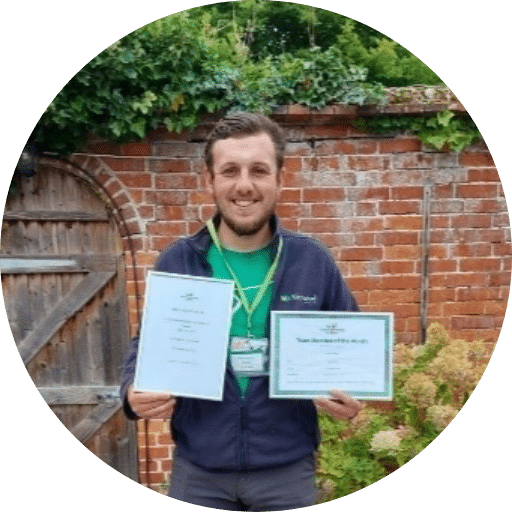
Skern Training & Skills Learner, Connor Daniel
Connor shared how Cognassist has helped him realise he is capable of more and that the big goals he has in mind are achievable with adequate support.
Background
Connor was aware from very early on that he struggled with reading and writing comprehensively despite excelling in other areas like maths and science. Despite his teachers suspecting he had dyslexia in primary school, it would take many, many years until he was officially tested and diagnosed with dyslexia. At the age of 23 he was finally diagnosed and three years later he went on to begin his Outdoor Activity apprenticeship with Skern Skills & Training where he would encounter Cognassist.
After taking the Cognassist digital cognitive assessment and receiving the monthly personalised support modules he is having a much more positive educational experience. Connor also feels more supported and no longer feels like his dyslexia is limiting him from making plans that involve further education.
Connor meets Cognassist
The Cognassist assessment was first introduced to Connor by his tutor at the beginning of his apprenticeship. The tutor explained this was something all learners were going to complete. Connor knew he would need Cognassist because he had been diagnosed with dyslexia three years before his current apprenticeship. He proceeded to take the Cognassist assessment and was blown away by just how detailed his assessment report was.
With the help of his tutor, who sat down with him to explain the assessment report and what it meant, Connor could finally see exactly why he struggled so much with reading and writing. The report also provided him with clarity about the areas where he needed additional support.
His experience with his current course and previous plumbing apprenticeship had a stark difference because of Cognassist. After Connor managed to get his GCSE’s, he made career and job decisions on the knowledge of his “problem areas” of reading and writing. He was deliberately making career choices that would avoid him using skills in those areas to do his job or further his education.
With the help of Cognassist, Connor says his current apprenticeship feels like the very beginning of a journey to doing exactly what he would like to do and not feeling hindered by his “problem areas”.
How Cognassist helped him
With the help of the Cognassist assessment report, he was able to see details such as “This is why you’re struggling in this area” and properly understand how he learns and thinks.
He has also found the modules very helpful and practical. He shares that he enjoys how they provide him with real-world examples and goes on to explain visually how to implement practical solutions. The modules have helped him learn things that generally are not taught in schools or apprenticeships but are necessary for work.
He shares that Cognassist didn’t just help for the short term with his current course, it has also helped with the long term by furthering his potential options. For example, the possibility that going to university is now an option and he has been properly equipped with the knowledge of what he needs and wants.
His recommendation
Connor recommends that all learners take the assessment as it is uniquely designed to discover specific areas where each individual learner requires extra help and attention. He has found it to be very impactful for his career and has changed his entire outlook when it comes to what he wants to achieve and how he achieves it.
The impact
The insight from the assessment report and how helpful the modules have been for him have helped Connor feel empowered not just within his educational environment but also in his day to day life too.
Yet the impact goes far beyond just providing support for his apprenticeship. He finished secondary school but avoided going to university to study sports science or to college to study sports analysis because of his struggle with reading and writing. Now for the first time, Cognassist has helped him realise he is capable of more and that the big goals he has in mind are achievable with adequate support.
Connor finished by saying that Cognassist has helped him be who he is and given him the tools to cope in the areas where he needs the help.
“...for the first time, Cognassist has helped me realise I am capable of more and that the big goals I have in mind are achievable with adequate support.”

Connor Daniel
Learner, Skern Training & Skills
Book a demo now
Help every one of your learners reach their full potential